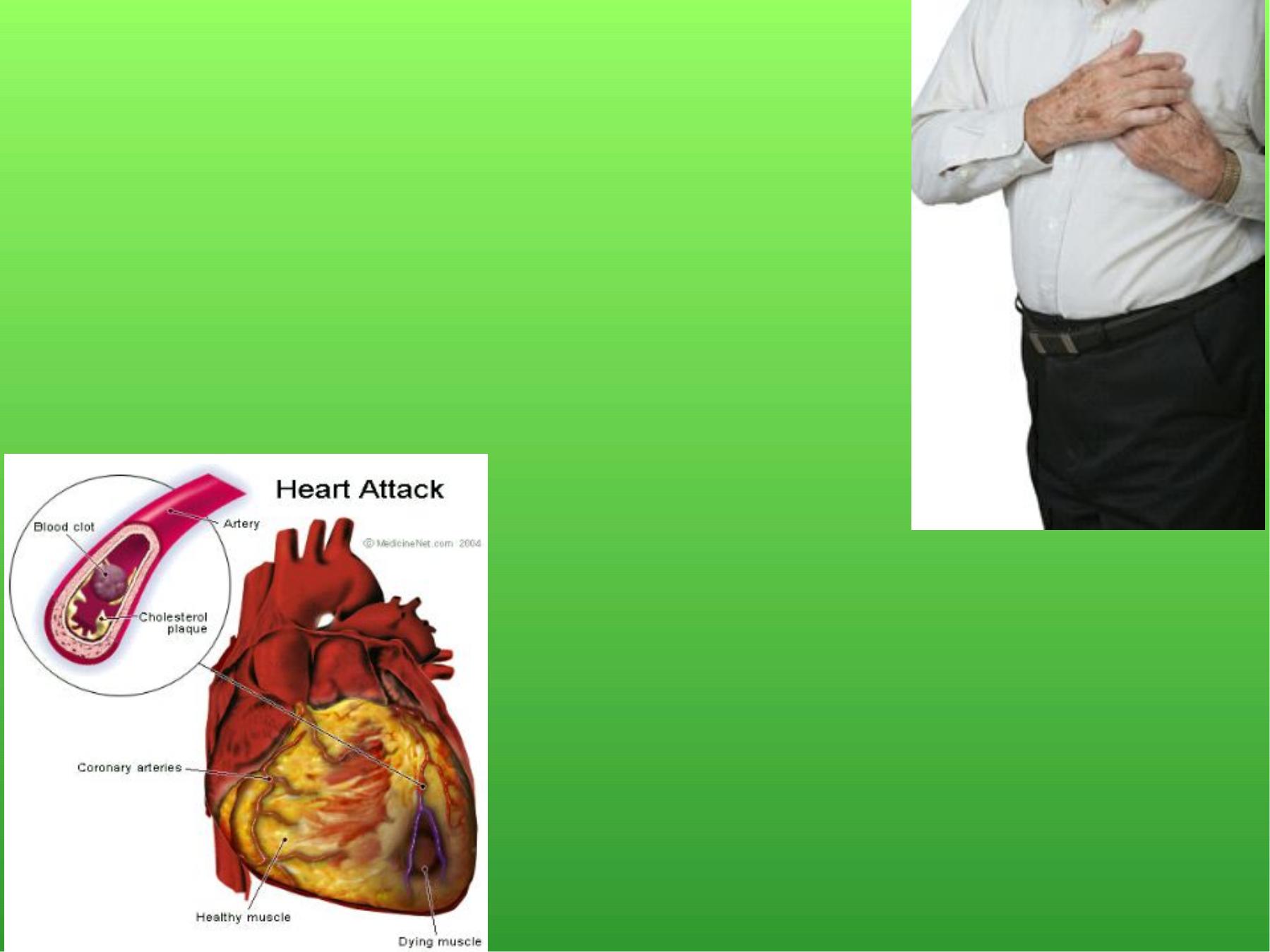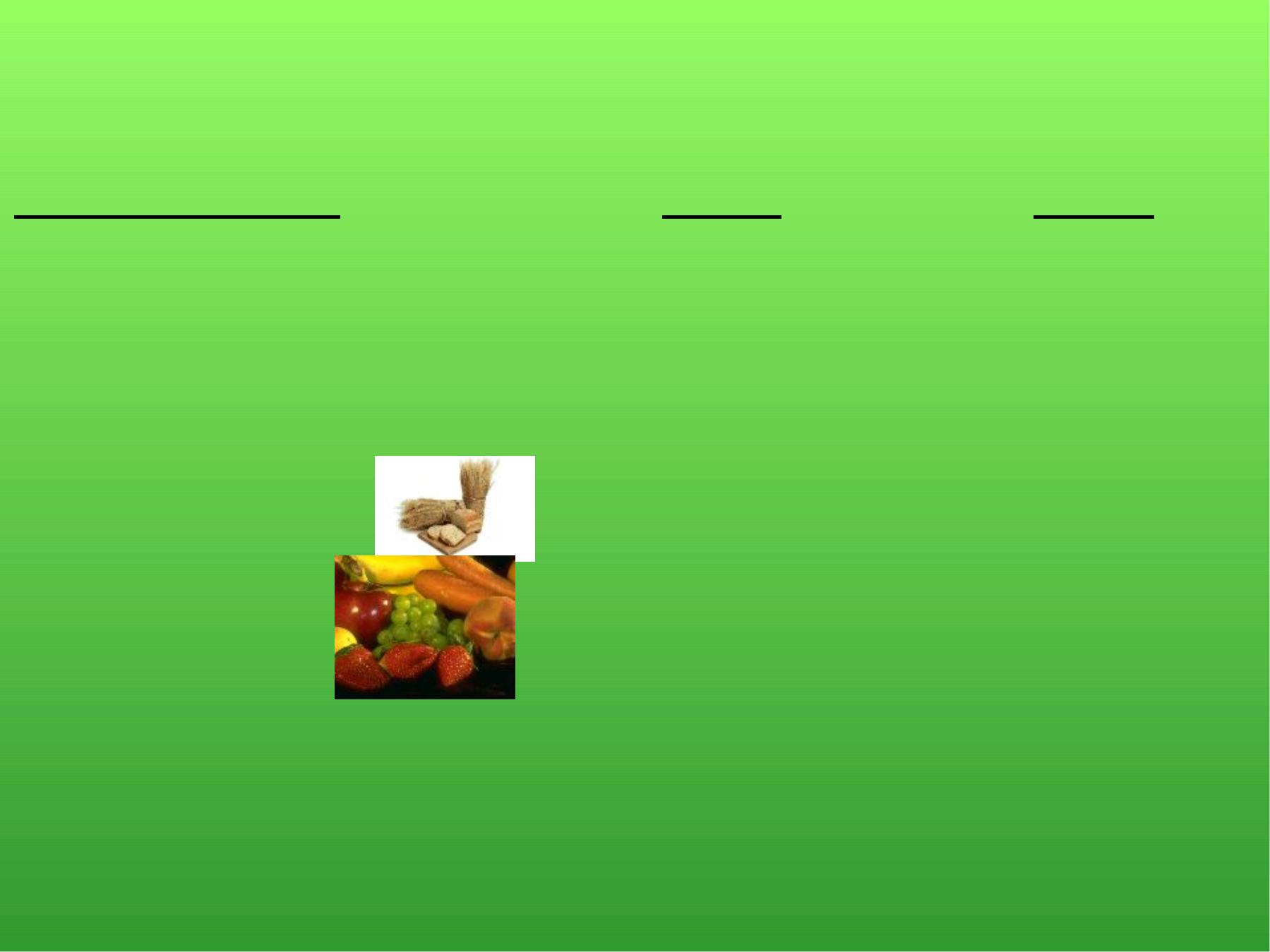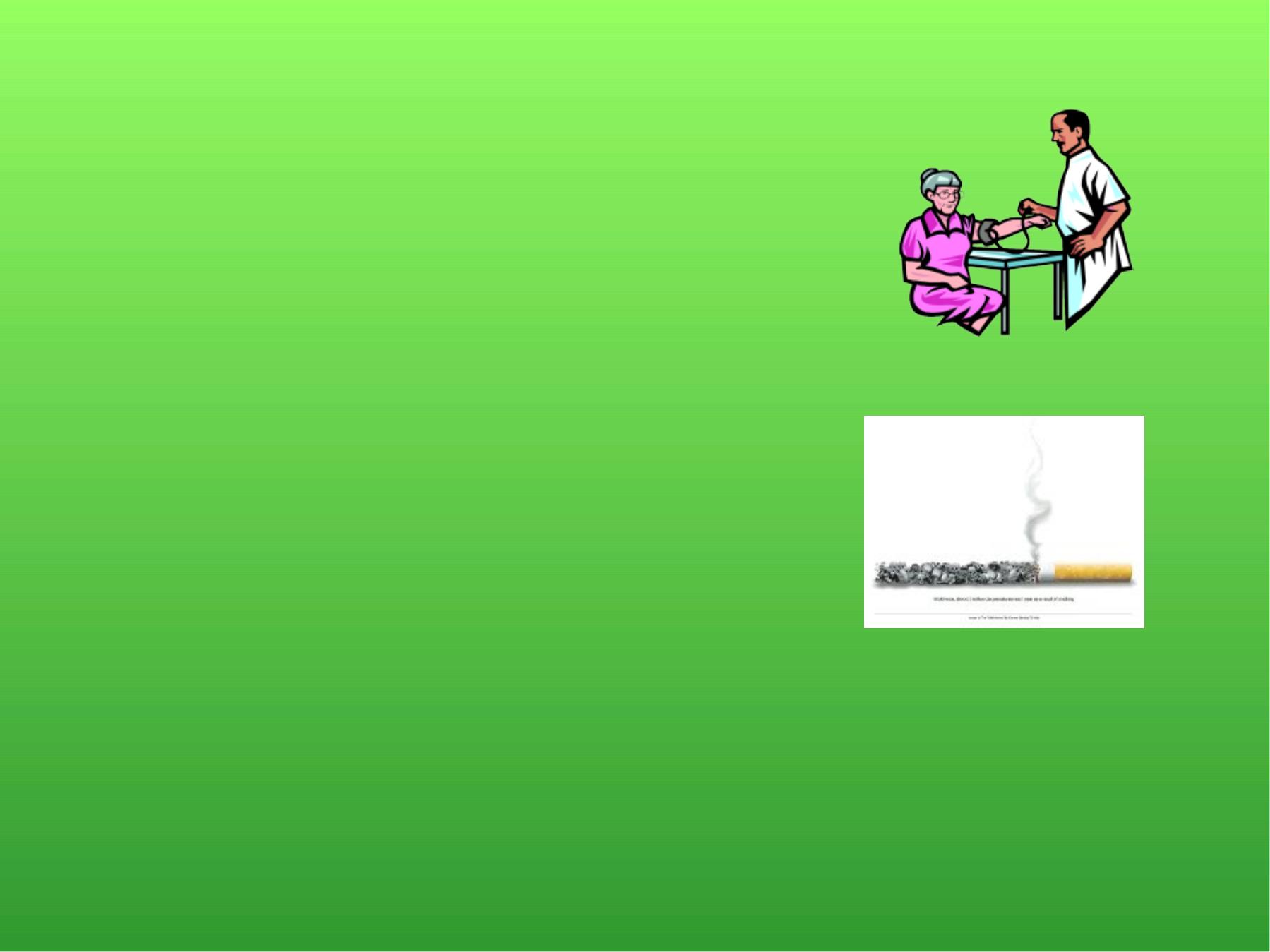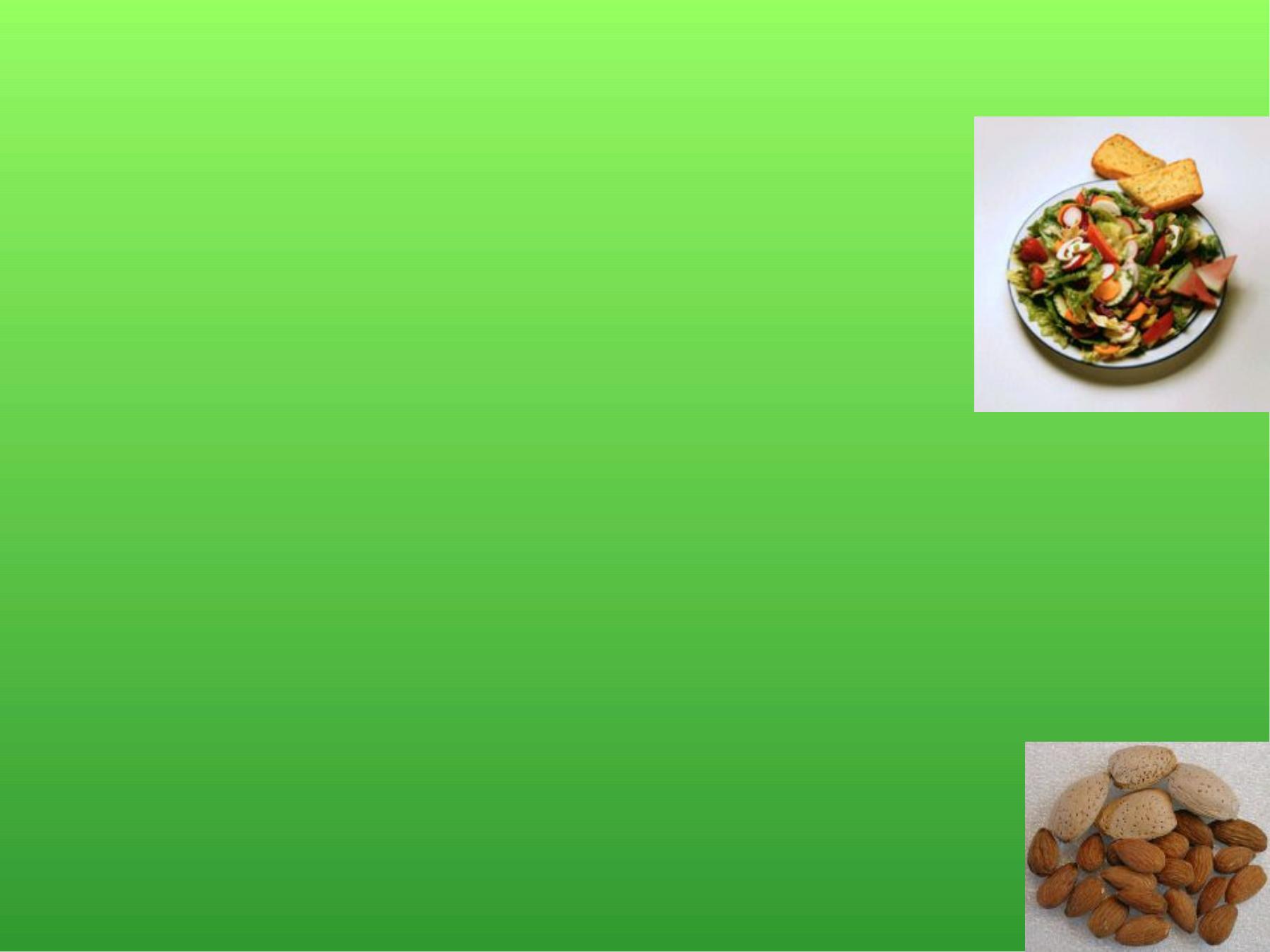
CVD &Dietary
management

:
Learning objectives
•
Good To know the risk factors of CHD,
•
HAVE to know: general principles of nutritional
therapy,
Guidelines for step 1& step 2 Diets(food guide
pyramid),
Life style modifications for H.T.& or
CV Risk,
Dietary Approach to Stop
H.T.=DASH.

Cardiovascular diseases are a large &growing
cause of death and disability, in developed
countries 33%/year& developing countries
about 8%, in parallel with the
obesity.
The most common CVD that the
diet related are CHD & H.T., they
become the single major cause of adult death,
the risk decrease when changes in the diet &
lifestyle occurred.

•
The WHO report 2002 identified a number of
key risk factors of CVD;
•
high blood pressure levels
>115mm Hg
form 45%.
•
high cholesterol
concentrations form 28%.
•
low intake of fruit & vegetables
<600gm/d
form 16%.
•
insufficient physical activity
form11%.
•
elevated BMI
form 15% of the risk factors.
•
alcohol consumption& tobacco use
form 12%.

Risk Factors for Cardiovascular Diseases:
•Major risk factors that cannot be changed:
–Heredity, gender(male, postmenopausal
female), race, increasing age.
•Major risk factors that can be eliminated or
modified:
–Cigarette smoking, high blood pressure,
blood cholesterol levels, physical inactivity
•Contributing factors:
–Obesity, diabetes, stress
&Urbanization

General Principles of Medical Nutritional
Therapy for CVD Patients
1-Dietary history to approximate cholesterol, total
fat, CHO, alco. intake, eating related behaviors.
2-Assessment of body composition, review wt.
history, exercise history & current medications.
3-Reduce caloric intake for overweight patient.
4- Avoid heavy meals, & divide the meals equally
throughout the day.
5-CHO intake 50-60% of total caloric intake in
form of complex CHO, less refined sugar.
6- Protein intake 12-15% total caloric intake.

7-Lipid profile monitoring (TG<200mg/dL, LDL
<130mg/dL are desirable).
8- High s.TG &LDL patient apply step 1 diet &
remeasure TG& LDL after 4-6wk & at 3m.
(average reduction of TG 30-40mg/dL).
9- If cholesterol goal achieved, do long term
monitoring of TG /3m for the 1
st
y.& /6m 2
nd
y.,
with dietary & behavioral modification.
10- If cholesterol goal not achieved apply step 2
diet, with remeasure TG after 4-6wk & at 3m.
(average reduction 15mg/dL), If cholesterol goal
achieved do long term monitoring as before.
If cholesterol goal not achieved, drug therapy+
diet therapy
.

Nutrient
Step1
Step2
Ø
Cholesterol
<300mg/d
<200mg/d
Ø
Saturated FA
<10%
<7%
Ø
Mono-UFA
10-15%
10-15%
Ø
PUFA
up to 10%
up to10%
Ø
Protein
12-15%
12-15%
Ø
Total calories
wt. reduction or maintenance
Ø
CHO
50-60%
50-60%
(Complex CHO preferable than simple sugar)
11- Anti-oxidant rich foods decrease or prevent
atherosclerosis.
12-At least 2 servings of high fiber diet/d
(vegetable, beans, whole grain bread).

13-Meat group; fish is preferred with the removal of all
visible fat.
14-Butter& cream should be avoided.
15-Egg intake should be limited up to 2/wk, (use egg
white).
16-Boiling food is preferred than frying, (use sunflower
&corn oil in frying &food preparation).
17-Skim milk, low fat cheese & yogurt.
18-Encourage use of olive oil.
19-Encourage use of oat meal & bran (bind to bile salt).
20-If dietary modification is not enough should use drug
therapy like Simvastatin.
21-Dietary & behavioral modification.
22-Increase activity level for inactive individual.

step1diet
& remeasure TG& LDL after 4-6wk &at 3m
.
If cholesterol goal achieved, do long term
Monitoring of TG/3m for the 1st y.& /6m 2nd y.
If cholesterol goal not achieved
step 2 diet,
with remeasure TG after 4-6wk & at 3m
If cholesterol goal achieved
do long
term monitoring as before.
If cholesterol goal not achieved
Drug therapy+ Diet therapy.
General Principles of Nutritional Therapy for CHD Patients
High s.TG &LDL patient

MNT to low er blood cholesterol -
Gu id el in es fo r step 1& step 2 Di ets:
Low fat types
step1
step2
Milk & dairy products
3 servings
2 servings
Meat gp.
2serving
2servings
Eggs
3/wk
2/wk
Bread& cereals
4-7/d
5-8/d
Fruits
3 servings
3 servings
vegetables
4
= /d
4 =/d
Sweets& snacks
2
=/d
2 =/d
Fat &oil (PUFA & mono) 5-7 =/d
4-6 =/d

Life style modifications for H.T.& or
CV Risk
•
Reduce wt. if overweight.
•
Increase physical activity.
•
Decrease sodium intake.
•
Increase K, Ca, Mg( decr. Risk of HT.).
•
Decrease fat intake.
•
Stop smoking.
•
Limit alcohol consumption.
High-carbohydrate diets;
Modest lowering effect on all lipid fractions, but rise
in TG

•
Cereals & grains; 7-8 servings.
•
Vegetables; 4-5 servings.
•
Fruits; 4-5 servings.
•
Low-fat or non-fat dairy foods; 2-3servings.
•
Lean meat, poultry( skinless), fish; 2servings
or less (3oz/serving).
•
Nuts (alternative to meat); 1.5 oz =1/3 cup
=2Tbsp seeds.
Dietary Approach to Stop H.T.
=DASH
